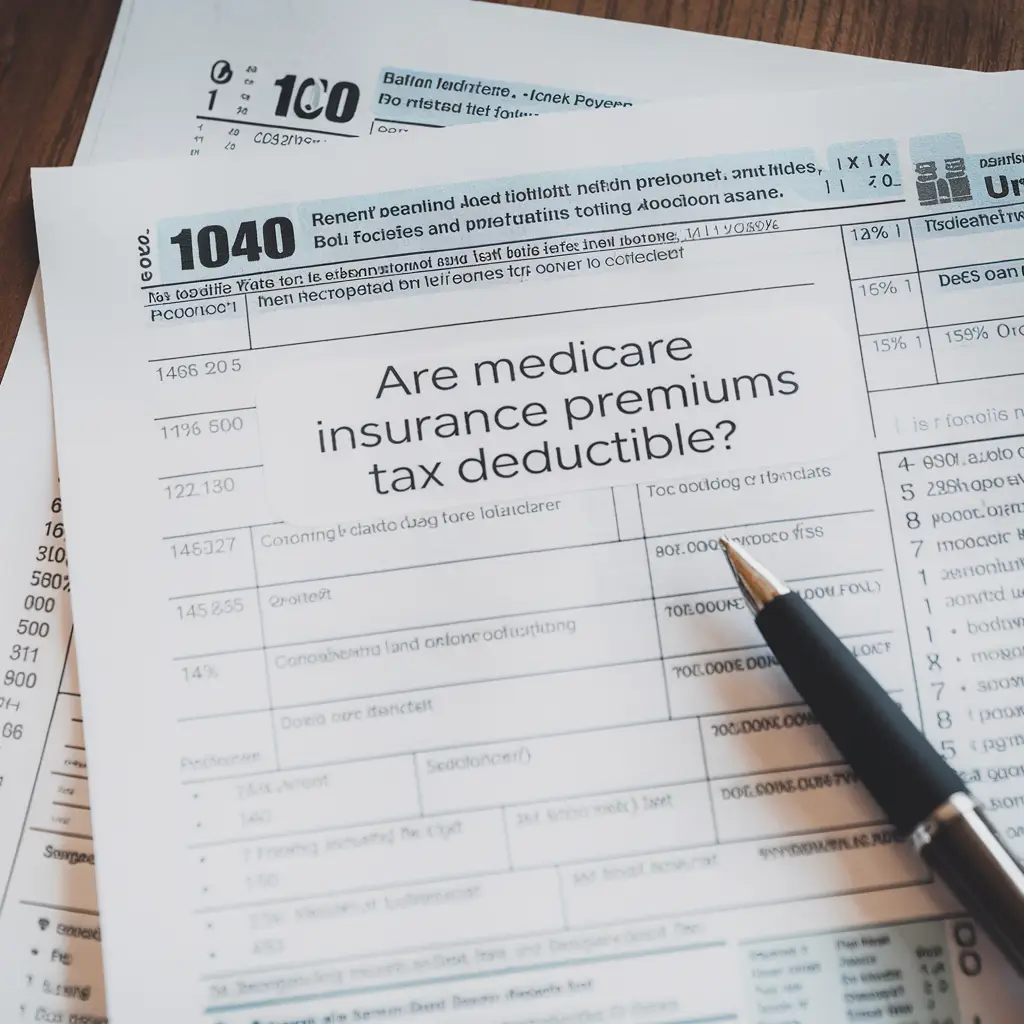The Medicare Annual Enrollment Period is a very important time for those who are eligible for Medicare. It usually happens from October 15 to December 7 every year, which gives people the chance to change their health plans. Many folks might not know that during this period, they can switch from Original Medicare to a Medicare Advantage plan or change their Advantage plan if they think it will suit them better. Also, it’s a good moment to either add or drop Part D for prescription drug coverage. It’s crucial that people review their current plans because sometimes benefits and costs changes from one year to another, making sure they aren’t missing out on better options available in the upcoming year can save money and improve care.
What Is the Medicare Annual Enrollment Period?
The Medicare Annual Enrollment Period (AEP) is a specific time each year from October 15 to December 7 when beneficiaries can make important changes to their Medicare plans. This period is crucial because the changes made will take effect on January 1 of the following year. During AEP, individuals have the opportunity to switch from Original Medicare to a Medicare Advantage plan or vice versa. Beneficiaries can also change their Medicare Advantage plans or Part D prescription drug plans if needed.
It’s important to note that AEP is distinct from the Initial Enrollment Period, which is when people first sign up for Medicare, and the General Enrollment Period. Missing the AEP can mean having to wait until the next year to make any changes. Since plan premiums, coverage, and formularies can change yearly, reviewing your current coverage and considering any changes in your health can help guide decisions during this period. For example, if you find that your current plan no longer covers a medication you need, AEP is the time to switch to a plan that better suits your needs.
Key Changes You Can Make During AEP
During the Medicare Annual Enrollment Period (AEP), beneficiaries have several options to tailor their healthcare coverage to better suit their needs. You can switch from Original Medicare to a Medicare Advantage plan, or vice versa. If you’re already on a Medicare Advantage plan, you can change to another that may offer better benefits or lower costs. Additionally, you have the option to join a Medicare Prescription Drug Plan (Part D) if you’re not already enrolled, or switch to a different Part D plan that might cover your prescriptions more effectively. If you find that Part D coverage is no longer necessary, you can choose to drop it altogether.
It is important to evaluate changes in premiums, coverage, and network providers for any plan you consider. Consider your healthcare needs and whether they have changed over the past year. Checking the Star Ratings of Medicare Advantage plans can help assess their quality, providing insight into customer satisfaction and service performance. Lastly, confirm that your necessary medications are still covered under your current plan’s formulary to avoid unexpected out-of-pocket costs. Taking these steps ensures your Medicare plan continues to meet your healthcare and financial needs effectively.
| Change | Description |
|---|---|
| Switch from Original Medicare to a Medicare Advantage plan | Beneficiaries can decide to switch to a plan that might offer extra benefits. |
| Switch from a Medicare Advantage plan back to Original Medicare | Returning to the original plan if the current one does not meet their needs. |
| Change from one Medicare Advantage plan to another | Selecting a different Medicare Advantage plan for better coverage or benefits. |
| Join a Medicare Prescription Drug Plan (Part D) | Enroll in a plan that helps cover the cost of prescription drugs. |
| Switch from one Part D plan to another | Choosing a different Part D plan that better covers their medications. |
| Drop your Medicare Part D prescription drug coverage altogether | Opting out of drug coverage if no longer needed. |
| Evaluate changes in premiums, coverage, and network providers | Reviewing and considering changes in costs and services before making a decision. |
| Consider any changes to your healthcare needs when switching plans | Taking into account how personal healthcare needs have changed. |
| Look at the Star Ratings of Medicare Advantage plans for quality assessment | Using the ratings to gauge the quality and performance of available plans. |
| Check if your medications are still covered under your current plan’s formulary | Ensuring that essential medications are still covered by the plan. |
Differences Between AEP and Other Enrollment Periods
The Medicare Annual Enrollment Period (AEP) is distinct from other enrollment periods due to its focus and flexibility in changing specific plans. While the Initial Enrollment Period (IEP) is a one-time window for those new to Medicare, missing it can lead to penalties. AEP, occurring annually from October 15 to December 7, allows beneficiaries to switch Medicare Advantage and Part D plans without penalty, with changes taking effect on January 1. In contrast, the General Enrollment Period (GEP), running from January 1 to March 31, only permits late enrollment in Original Medicare, not plan changes, and coverage starts July 1. Special Enrollment Periods (SEPs) provide flexibility based on personal circumstances like relocation or loss of employer coverage, occurring anytime as needed. It’s important to note that AEP does not cover adding Medigap policies, which follow separate rules. Understanding these differences helps beneficiaries make informed decisions about their healthcare coverage.
Updates to Medicare Enrollment for 2025
In 2025, several updates have been introduced to Medicare enrollment that beneficiaries should be aware of. One key change is the adjustment in Medicare Part B premiums, which may affect budgeting for healthcare expenses. Additionally, modifications in Medicare Part D drug coverage and premiums could influence medication costs, so it’s essential to review these changes closely. Medicare Advantage plans have also seen updates in their networks and coverage options, making it crucial for enrollees to examine their current plans to ensure they still meet their needs.
For those new to Medicare, it’s important to check any changes in eligibility criteria for 2023. Some plans have introduced new benefits or services, offering more comprehensive coverage. The Medicare Savings Programs also has updated income and resource limits, potentially allowing more individuals to qualify for assistance.
There have been adjustments in deductibles, copayments, and coinsurance amounts, impacting out-of-pocket costs for beneficiaries. Moreover, changes in coverage for telehealth services continue to expand access to remote healthcare, which has become increasingly important. Finally, new rules and regulations have been implemented to enhance Medicare fraud prevention measures, ensuring the program’s integrity remains intact. Staying informed about these changes can help beneficiaries make the most of their Medicare coverage.
Steps to Review Your Current Medicare Coverage
Reviewing your current Medicare coverage is essential to ensure it meets your healthcare needs. Start by gathering all your Medicare plan documents for a thorough review. List your healthcare needs, such as preferred doctors, necessary medications, and required services. Compare this list with your current plan to ensure it aligns with your needs. Check if your preferred doctors and hospitals are still within your plan’s network. Reviewing the formulary is crucial to confirm your medications are covered.
Evaluate any changes in premiums, deductibles, and out-of-pocket costs to understand the financial aspects of your plan. Consider any new healthcare needs you may have developed over the past year. It’s also wise to check the quality ratings of your plan to ensure it provides satisfactory service. Look for any notices of changes sent by your plan provider, as these might affect your coverage.
If you need more information or clarification about your coverage, don’t hesitate to contact your plan provider. By following these steps, you can make informed decisions about your Medicare coverage.
How to Compare Medicare Plans Effectively
When comparing Medicare plans, the Medicare Plan Finder tool is a great starting point. It helps you explore available plans in your area. Key aspects to compare include the costs of premiums, deductibles, and copayments. It’s important to evaluate coverage options to ensure your preferred hospitals and doctors are in-network. Checking the formulary for drug coverage can prevent unexpected expenses, and it’s wise to look for any restrictions. Reviewing a plan’s Star Rating provides insight into its quality and performance. Your healthcare needs and preferences should guide your decision-making. Additionally, consider any extra benefits offered by Medicare Advantage plans. Understand the rules for switching plans during enrollment periods to avoid penalties. Reading reviews and testimonials from current members can offer personal insights. Consulting with a Medicare advisor or counselor can also provide personalized recommendations. Here’s a quick checklist to help you compare effectively:
- Costs: Premiums, deductibles, copayments
- Coverage: In-network hospitals and doctors
- Drug Coverage: Formulary and restrictions
- Quality: Star Rating
- Extra Benefits: Offered by Medicare Advantage
- Rules: Enrollment period switching
- Member Feedback: Reviews and testimonials
- Personal Advice: Consult a Medicare advisor
Resources for Personalized Medicare Assistance
Navigating Medicare can be complex, but there are many resources to help you make informed decisions. Start by contacting the State Health Insurance Assistance Program (SHIP) for free and personalized counseling. For official information and tools, the Medicare.gov website is a valuable resource. The “Medicare & You” handbook offers comprehensive guidance on your coverage options. If you need immediate assistance, call 1-800-MEDICARE. Local Area Agencies on Aging can provide additional support tailored to your needs. Consider hiring a licensed Medicare insurance broker for personalized help. Attending Medicare educational seminars or webinars can provide detailed insights into your options. Online forums and communities are great for peer advice and shared experiences. Check if local community health clinics offer assistance with Medicare plans. Lastly, consult with your healthcare provider for recommendations specific to your health needs.
Planning Ahead for Future Healthcare Needs
When planning for future healthcare needs, it’s essential to assess your current health status and anticipate potential changes. Begin by evaluating your family’s health history, which can provide insights into possible future conditions that may require specific coverage. If you have chronic conditions, ensure your plan accommodates necessary treatments. Financial considerations are crucial as well; consider your budget for healthcare costs, including potential expenses for long-term care options and insurance.
Exploring supplemental insurance plans like Medigap can offer additional coverage and peace of mind. Stay informed about emerging healthcare technologies and treatments that could impact your future needs. It’s also wise to discuss your healthcare plans with family or trusted advisors to ensure you’re making well-rounded decisions.
Preparing legal documents such as advance directives or healthcare proxies is vital in communicating your healthcare wishes. Regularly updating your healthcare plan as your needs change is equally important to ensure it remains relevant and effective. By taking these steps, you can better prepare for future healthcare challenges, ensuring you have the necessary coverage and support.
Staying Updated with Medicare Information
Keeping yourself informed about Medicare is essential, especially during the Annual Enrollment Period. To stay updated, consider signing up for email alerts from Medicare.gov. Regular visits to the official Medicare website can also provide the latest news and updates. Following Medicare-related organizations on social media platforms is a good way to get timely information. Subscribing to newsletters from Medicare advocacy groups can offer insights into changes and updates.
Participating in workshops or webinars focused on Medicare changes can be very helpful. These events often provide detailed information and answer common questions. Joining local community groups can also offer a platform to discuss Medicare topics with others who are in the same situation. Reading the annual Medicare & You handbook thoroughly is crucial, as it contains important updates and information.
Watch out for mail notifications from your plan provider about any changes that may affect you. Listening to Medicare-focused podcasts can give you different perspectives and a deeper understanding. Lastly, keeping in contact with your healthcare provider ensures you are aware of any updates relevant to your personal health needs. These steps are effective ways to stay informed and make educated decisions regarding your Medicare coverage.
Frequently Asked Questions
1. What is the Medicare Annual Enrollment Period?
The Medicare Annual Enrollment Period is a time each year when people can make changes to their Medicare health and drug plans. It usually happens from October 15 to December 7.
2. Who can make changes during the Medicare Annual Enrollment Period?
Anyone who is already enrolled in Medicare can make changes during this period. This includes switching, joining, or dropping a plan.
3. Why is it important to review my Medicare plan during the Annual Enrollment Period?
It’s important because your needs may have changed, or your current plan might be changing its costs, coverage, and which providers are in the network.
4. How can I change my Medicare plan during the Annual Enrollment Period?
You can change your Medicare plan by visiting the Medicare website, calling Medicare, or contacting a Medicare representative who can help you with the process.
5. What happens if I don’t make any changes during the Medicare Annual Enrollment Period?
If you don’t make any changes, your current plan will automatically renew for the next year, but it’s still a good idea to check if it still meets your needs.
The Medicare Annual Enrollment Period (AEP) takes place from October 15 to December 7 each year, allowing beneficiaries to change their Medicare Advantage and Part D plans, effective January 1. This period is distinct from other enrollment periods like the Initial Enrollment Period and the General Enrollment Period. It’s pivotal to review personal healthcare needs and plan specifics as premiums, coverage, and providers can vary yearly. Resources like the Medicare Plan Finder tool and personalized counseling are available to help beneficiaries compare plans and make informed decisions. Keep informed about changes and updates to Medicare policies by utilizing the Medicare.gov website, attending educational sessions, and consulting with healthcare professionals.
Switching plan after enrollment










